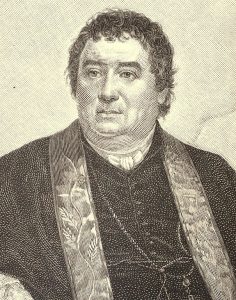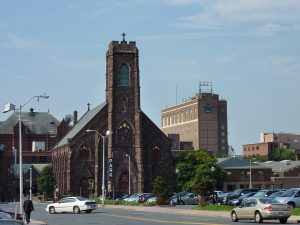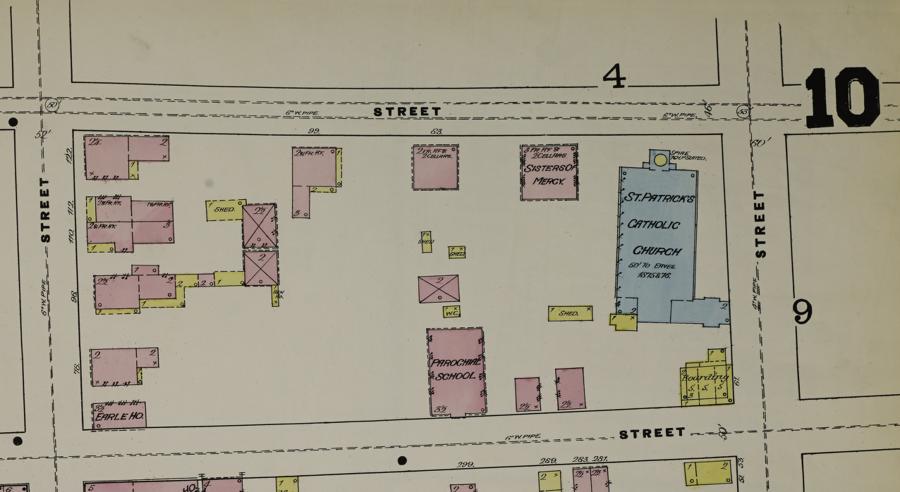By Edward T. Howe
Holy Trinity Church in Hartford became the first Roman Catholic church in Connecticut in 1829. It served the Roman Catholic community for over 20 years before the congregation moved to a new building in 1851. A fire claimed the original church two years later.
Religion in Colonial Connecticut

Bishop Benedict Joseph Fenwick, Bishop of Boston who dedicated Holy Trinity Church – Wikimedia Commons
Until 1818, the Congregational Church served as the established church in Connecticut. By the early 18th century, however, the dissenting minorities of Anglican/Episcopalians and Baptists had erected their own church buildings. Yet, they had to continue financing the Congregational churches before slowly gaining tax exemptions from this obligation.
With the adoption of the 1818 Connecticut Constitution, all religious denominations had to financially support themselves. The absence of any established Roman Catholic churches, however, precluded this benefit.
A Permanent Roman Catholic Church in Hartford
Without a physical church, Roman Catholics in Connecticut celebrated Mass and conducted services in homes and other informal locations. With the increase in Roman Catholic immigrants to Connecticut in the early 19th century—in part, to help build the Farmington and Enfield canals—there was an increasing need for a permanent location to worship.

The parish continues today as St. Patrick – St. Anthony Church in Hartford, Connecticut – Wikimedia, Jim McIntosh
On July 13, 1829, Bishop Benedict J. Fenwick, who oversaw all of the New England states, arranged for the purchase of Christ Episcopal Church in Hartford—and its organ—for $900. Initially part of the Diocese of Boston, it became the first Roman Catholic church in Connecticut. By November, the building moved to a new location. After renovation, Bishop Fenwick dedicated Holy Trinity Church on July 30, 1830. Father Bernard O’Cavanagh served as its first pastor from 1829 to 1831, when Father James Fitton succeeded him. In 1843, the church became part of the newly established Archdiocese of Hartford.
In 1849, church officials decided to build a larger church in another area of the city to accommodate over one thousand members. Dedicated in December 1851, they named the new edifice St. Patrick Church. On May 12, 1853, a fire burned down the old Holy Trinity Church, which had been little used since the building of the new church. While the original church building no longer exists, the parish continues today as the St. Patrick – St. Anthony Church in Hartford.
Edward T. Howe, Ph.D., is Professor of Economics, Emeritus, at Siena College near Albany, N.Y.









